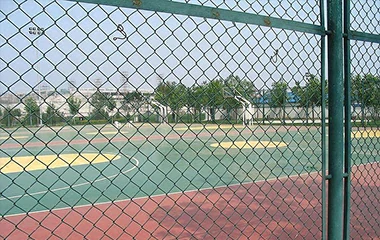 TEL:
+86-13102802206
TEL:
+86-13102802206
 Email:
fencenetting@china.com
Email:
fencenetting@china.com
 Language
Language
 TEL:
+86-13102802206
TEL:
+86-13102802206
 Email:
fencenetting@china.com
Email:
fencenetting@china.com
 Language
Language


Understanding Window Netting Frames An Essential Component for Modern Architecture
In the ever-evolving landscape of architectural design and construction, window netting frames have emerged as a crucial element, marrying functionality with aesthetics. These frames not only serve to support windows but also enhance the overall design of a building. Understanding the intricacies of window netting frames can help designers, engineers, and homeowners appreciate their significance in contemporary architecture.
What Is a Window Netting Frame?
A window netting frame is essentially a structural frame that supports the installation of windows in various types of buildings, from residential homes to large commercial structures. Characterized by its robustness, the netting frame ensures that windows are securely anchored while also offering a surface for the installation of various types of glazing or netting materials. This can include everything from traditional glass to more modern composite materials that enhance energy efficiency.
The Role of Window Netting Frames in Design
One of the most significant aspects of window netting frames is their versatility in design. They can be crafted in numerous shapes, sizes, and styles to complement the architectural vision of a project. For instance, in minimalist designs, sleek metal netting frames may be employed to create a clean, modern aesthetic, while in more traditional architecture, wooden frames might be used to invoke a classic charm.
Moreover, these frames allow for expansive window designs that can maximize natural light, creating airy and open living spaces. Large glass panels supported by sturdy netting frames enable architects to design homes that are both visually appealing and functionally efficient. This capability has become increasingly important as sustainability and energy efficiency have taken precedence in modern building practices.
The Importance of Safety and Security

Beyond aesthetics, window netting frames play a vital role in ensuring the safety and security of a building. They provide robust support that can withstand various environmental factors, including wind pressure and seismic activity. In regions prone to extreme weather conditions, energy-efficient windows held in secure frames can significantly contribute to the structural integrity of a building.
Additionally, window netting frames can be designed to accommodate security features such as window locks and bars. This is particularly important in urban environments where the risk of break-ins is higher. By incorporating strong window frames, homeowners can enjoy peace of mind, knowing that their property is well-protected.
Energy Efficiency and Environmental Impact
With the growing emphasis on sustainable building practices, window netting frames can also contribute to a building's energy efficiency. Properly designed and installed frames can reduce air leakage, helping to maintain indoor temperatures and reduce heating and cooling costs. Moreover, the integration of double or triple-glazed windows into netting frames further enhances energy performance by providing better insulation.
In addition, the materials used to construct window netting frames can be selected for their environmental impact. Options range from sustainable timber to recycled metals, allowing builders to make choices that align with eco-friendly principles.
Conclusion
In conclusion, window netting frames are far more than mere support structures; they are a vital component of modern architectural design. Whether enhancing the aesthetic appeal of a building, ensuring safety and security, or contributing to energy efficiency, these frames are indispensable in today’s construction environment. As architects and builders continue to innovate, the development of window netting frames will likely evolve, incorporating new materials and technologies to meet the demands of sustainable and modern living. By understanding their significance, stakeholders in the construction industry can better appreciate the role of window netting frames in creating safe, beautiful, and efficient spaces for all.